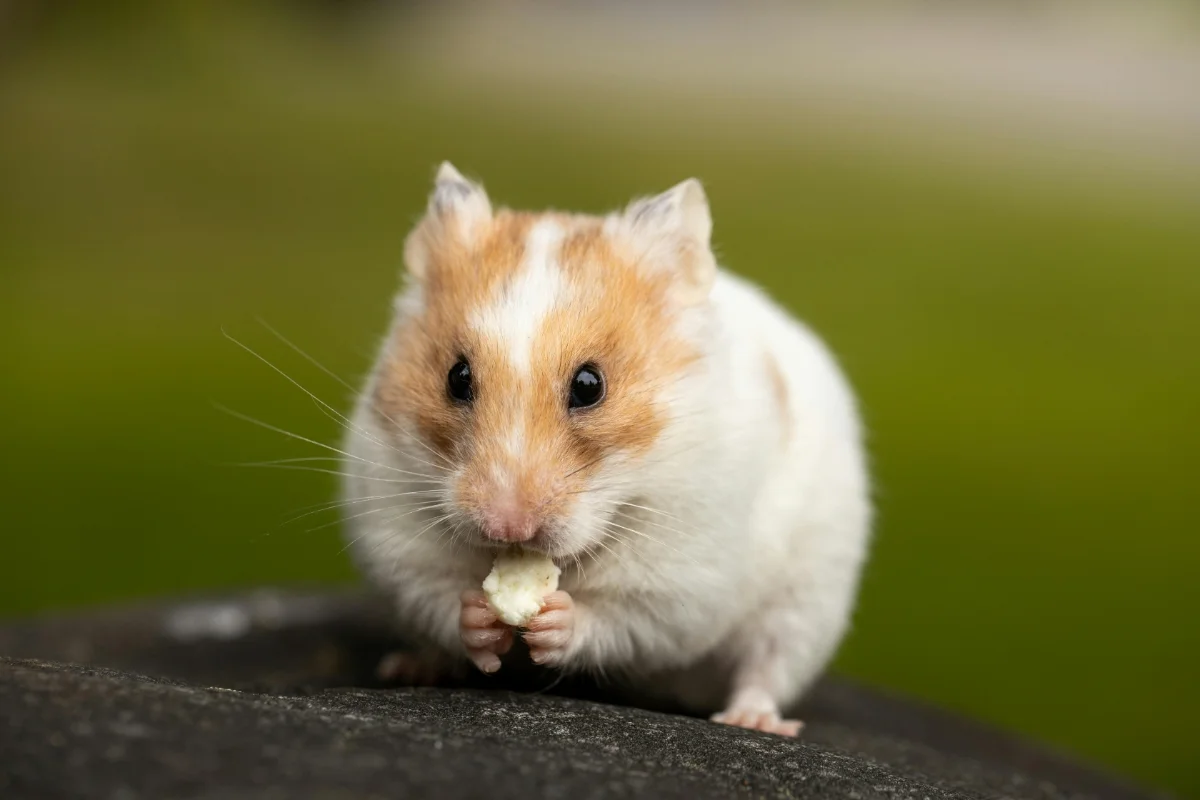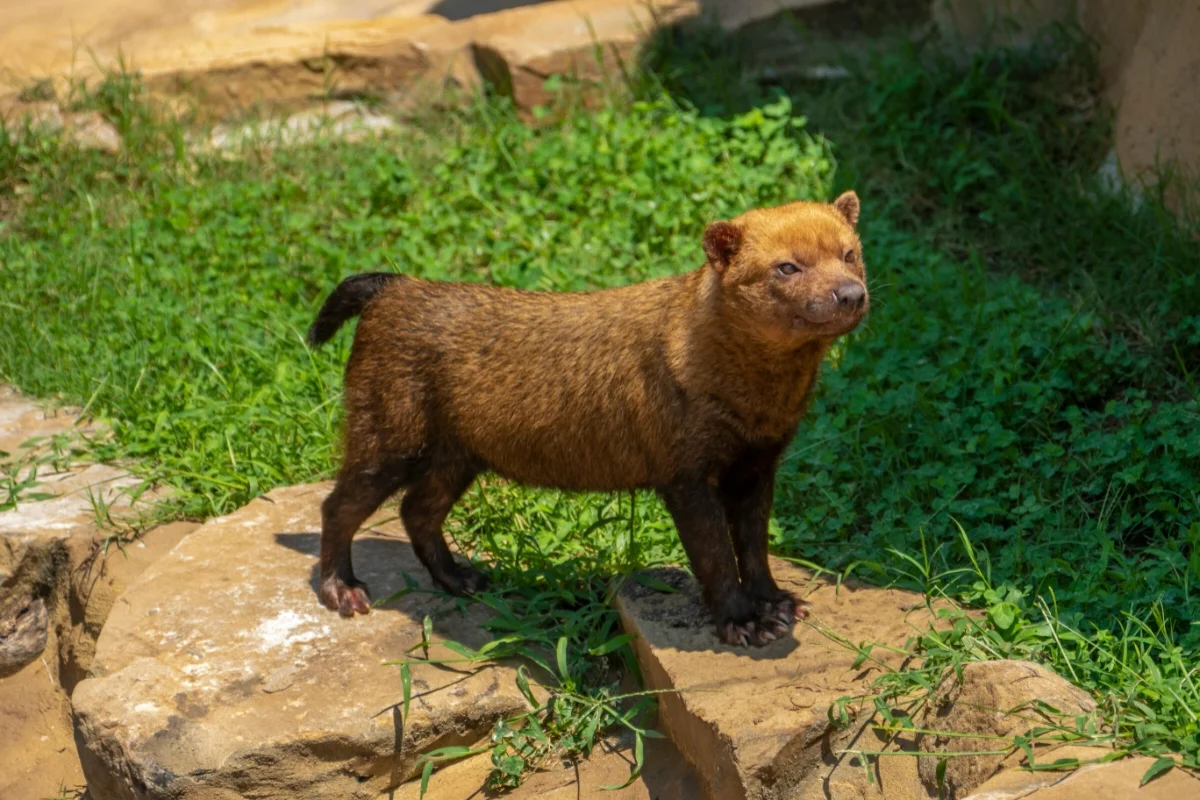
Ferret vs Weasel vs Mink: Differences, Identification & Comparison Guide
Discover key differences between ferrets, weasels, and minks. Learn size, behavior, habitat, identification, and which one makes the best pet.
By
Published:
Ferrets are domesticated, social pets; weasels are tiny, wild predators; and minks are semi-aquatic hunters with darker fur and strong aggression. Ferrets are friendly and trainable, while weasels and minks remain wild and unsuitable as pets.
Ferret vs Weasel vs Mink: Full Comparison Guide
Mustelids are among the most fascinating carnivorous mammals on the planet. Their slender bodies, sharp senses, and impressive hunting skills make them both admired and misunderstood. Among them, three animals often get confused: the ferret, the weasel, and the mink. Although they appear similar, each species has distinct characteristics, behaviors, and ecological roles.
In this detailed guide, we break down their physical traits, behaviors, habitats, diets, human interactions, and more—helping you clearly understand the difference between ferrets, weasels, and minks.
1. Introduction to Mustelids
All three animals belong to the Mustelidae family, which includes otters, badgers, martens, fishers, and wolverines. Mustelids are known for their:
- elongated bodies
- sharp canines
- keen sense of smell
- powerful predatory instincts
Ferrets, weasels, and minks share a common ancestry, but human domestication, environmental adaptation, and evolution have shaped them in unique ways.
2. Ferret Overview: The Domesticated Mustelid
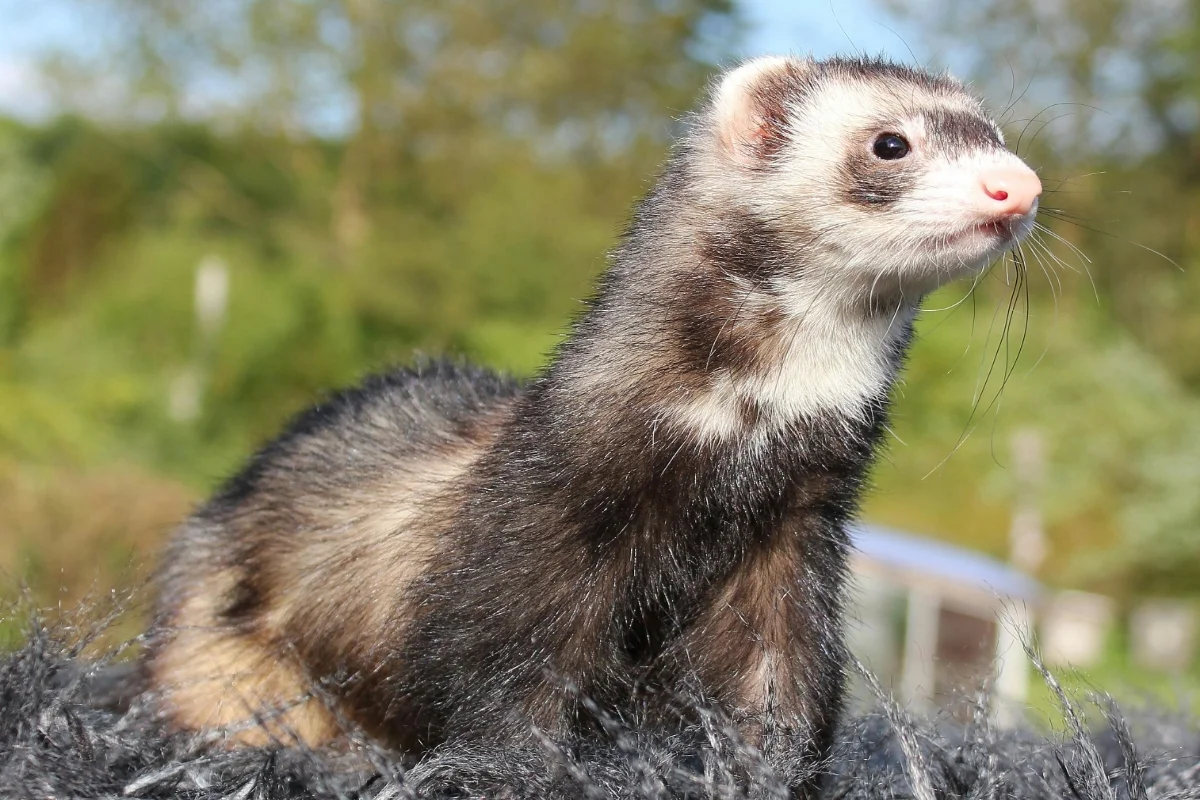
History and Domestication
For over 2,500 years, ferrets (Mustela putorius furo) have been domesticated and closely associated with human life. Romans used them for hunting rabbits, and in modern times they have become popular pets.
Unlike weasels and minks, ferrets are not wild animals by nature—they depend heavily on humans.
Physical Appearance
Ferrets have:
- Length: 20–24 inches including tail
- Weight: 0.7–2 kg
- Body: Long but slightly bulkier
- Face: Soft and rounded
- Colors: Sable, albino, cinnamon, chocolate, black
Their eyes are expressive, and their fur is softer compared to wild mustelids.
Temperament and Behavior
Ferrets are extremely social and playful. Owners often describe them as “cat-dog hybrids” because they combine the curiosity of cats with the friendliness of dogs.
Common behaviors include:
- tunneling
- exploring
- playful biting (nipping)
- hiding objects
- sleeping for 14–18 hours a day
Ferrets thrive in group settings and get depressed if kept alone.
Diet
Ferrets are obligate carnivores, requiring:
- high protein
- high fat
- minimal carbohydrates
Suitable foods include raw meat or premium ferret kibble.
Habitat
As domesticated animals, ferrets live:
- in homes
- in ferret cages
- on farms
- in shelters
They rarely survive in the wild.
Suitability as Pets
Ferrets are the only one of the three species suitable for pet ownership. They can be trained, handled, and socialized.
3. Weasel Overview: The Fiercest Tiny Predator
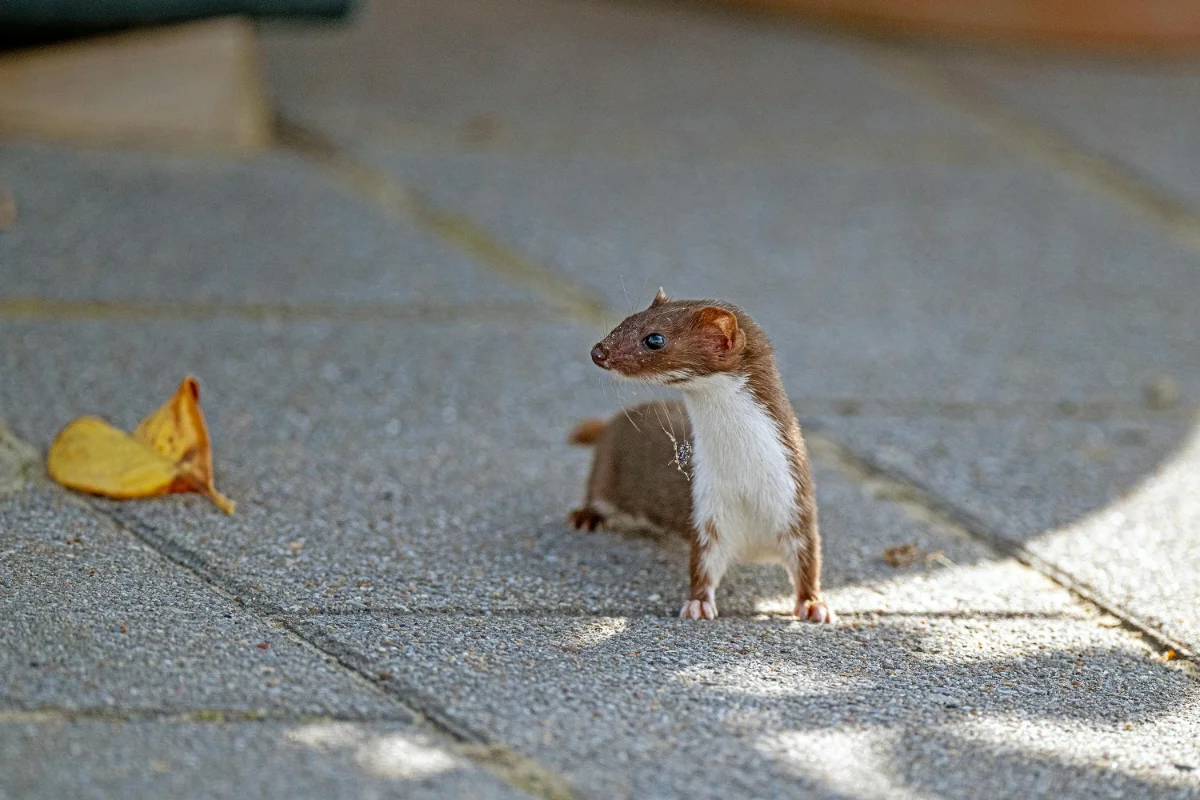
Species and Distribution
Weasels include several species, such as the least weasel and stoat (ermine). They are the smallest carnivorous mammals in the world.
Physical Appearance
- Length: 6–13 inches
- Weight: 28–250 grams
- Color: Brown top, white underside
- Body: Extremely slender
- Tail: Short compared to minks
Their slim bodies help them enter burrows to chase prey.
Behavior and Temperament
Weasels are:
- solitary
- fiercely territorial
- fast and agile
- expert hunters
Despite their small size, they can overpower animals larger than themselves.
Diet
Weasels hunt frequently due to a high metabolism. Their diet includes:
- rats
- mice
- birds
- rabbits
- eggs
- insects
They help control rodent populations but can disrupt poultry farms.
Habitat
Weasels adapt to many environments:
- grasslands
- forests
- marshy lands
- farms
- hedgerows
They live in abandoned burrows or small dens.
Interaction with Humans
Weasels are not domesticated and are unsuitable as pets. Their aggressive nature makes them unpredictable.
4. Mink Overview: The Semi-Aquatic Hunter

Species
Two main types:
- American Mink – Neogale vison
- European Mink – Neogale lutreola (endangered)
Physical Appearance
- Length: 18–28 inches
- Weight: 0.7–1.6 kg
- Fur: Dark brown to black
- Body: Muscular and sleek
- Feet: Partial webbing for swimming
Minks have a glossy coat often used in fur farming.
Behavior
Minks are:
- solitary
- territorial
- aggressive
- nocturnal hunters
They are excellent swimmers and climbers.
Diet
Minks hunt both aquatic and land prey:
- fish
- frogs
- birds
- rodents
- snakes
- crayfish
Their varied diet makes them top predators in freshwater ecosystems.
Habitat
Minks live near water sources:
- rivers
- lakes
- marshes
- coastal streams
They dig burrows or occupy abandoned dens.
Human Interaction
Minks have been farmed for fur for decades. Escaped minks in some regions have caused ecological concerns due to invasive behavior.
5. Ferret vs Weasel vs Mink: Detailed Comparison Table
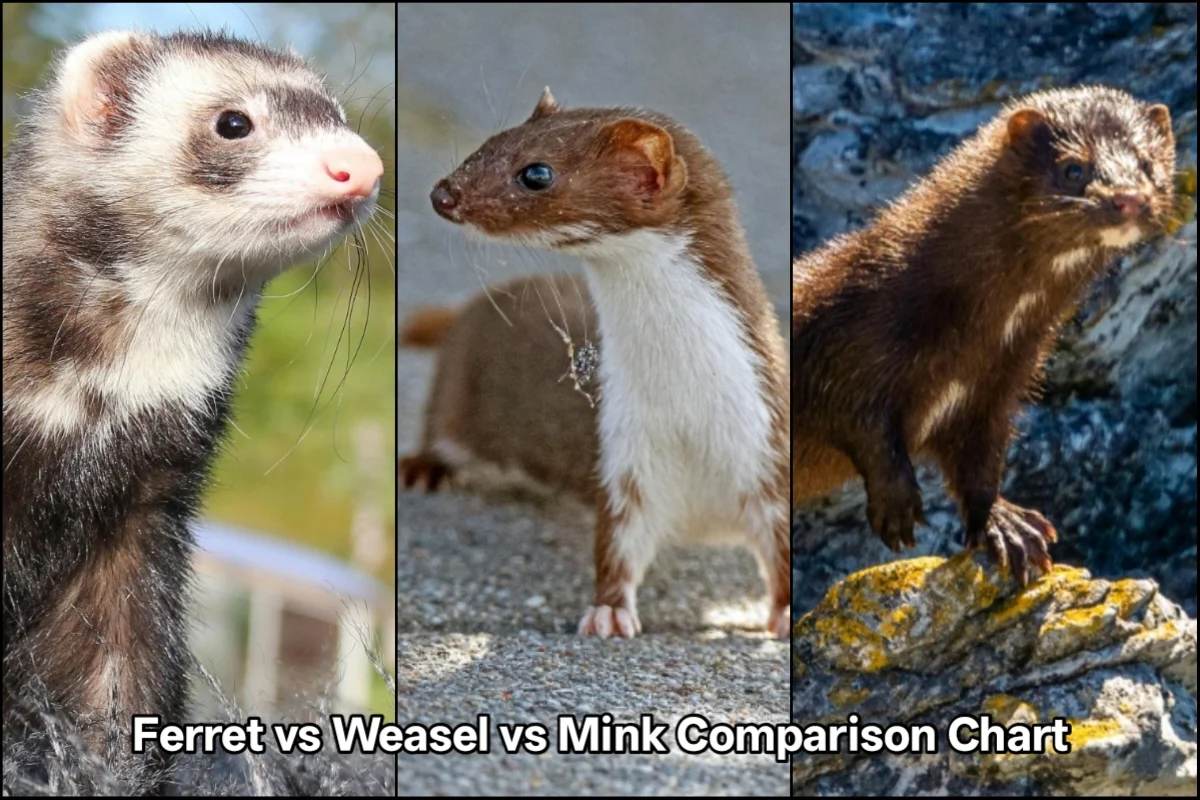
Physical Characteristics
| Feature | Ferret | Weasel | Mink |
|---|---|---|---|
| Size | Medium | Smallest | Medium-Large |
| Fur | Many colors | Brown/white | Dark brown/black |
| Body Shape | Thicker | Very slender | Muscular |
| Tail | Medium | Short | Long, bushy |
Behavior
| Feature | Ferret | Weasel | Mink |
|---|---|---|---|
| Social | Very social | Solitary | Solitary |
| Aggression | Low | High | Very High |
| Trainable | Yes | No | No |
| Domestic Use | Pets | None | Fur |
Habitat
| Feature | Ferret | Weasel | Mink |
|---|---|---|---|
| Environment | Human homes | Fields/forests | Water areas |
| Wild Presence | No | Yes | Yes |
| Survival with Humans | High | Low | Low |
6. Identification Guide: How to Tell Them Apart Quickly
Ferret
- Softer face
- Longer, bulkier body
- Multiple colors
- Friendly and curious
Weasel
- Very tiny
- Brown with white belly
- Fast and jittery
- Slender, narrow face
Mink
- Dark brown or black
- Water-loving
- Longer tail
- More muscular
7. Which One Makes the Best Pet?
✔ Ferret – Yes
Ferrets can be trained, handled, and socialized. They love human companionship.
❌ Weasel – No
Weasels are wild, aggressive, untrainable, and illegal to keep in many regions.
❌ Mink – No
Minks are extremely territorial, often attacking humans or pets. They also require water-based habitats.
8. Environmental Role of Each Species
Ferrets
Limited impact in the wild due to domestication.
Weasels
Crucial rodent controllers. They help protect crops but may also invade poultry farms.
Minks
Play an important role in freshwater ecosystems by maintaining predator-prey balance.
9. Common Misconceptions
“Ferrets are wild like weasels.”
❌ False – Ferrets are domesticated.
“Weasels and minks are the same animal.”
❌ No – minks are larger, darker, and semi-aquatic.
“Ferrets smell bad naturally.”
✔ True – They have scent glands, but this can be controlled with hygiene.
10. FAQs
Technically yes—they belong to the same family—but ferrets are domesticated and behaviorally different.
Minks are the most aggressive, followed by weasels.
Highly unlikely. They remain wild and cannot be safely handled.
Yes, minks are excellent swimmers with semi-webbed feet.
Their metabolism and energy cycles require long rest periods.
Conclusion
Ferrets, weasels, and minks may share a family tree, but their lifestyles and behaviors are remarkably different. Ferrets are domesticated companions, weasels are fierce tiny hunters, and minks are powerful semi-aquatic predators. Understanding these differences helps you identify them in nature and appreciate each species’ ecological role.
Science Writer & Wildlife Expert.
Get to know more about the Ferret, Weasel & Mink

